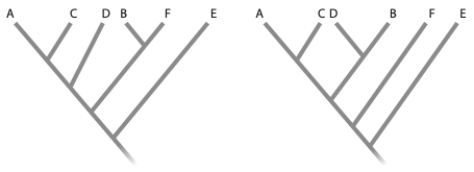Not Answered
You are using maximum parsimony to determine the relationships among six species (A, B, C, D, E, and F). You examine eight different traits for the six species and an outgroup. Below you will find the data matrix. (a) Which traits are not useful for distinguishing relationships among species A, B, C, D, E, and F?
(b) Given below are two possible tree topologies for these species. Based on the principle of maximum parsimony, circle the tree that most likely represents the true relationships among these species. Please show your work (that is, map the traits with tick marks onto each tree, and beside each tick mark give the number of the trait). Please include all traits, even those you determined were not useful in part (a). 
Correct Answer:

Verified
Correct Answer:
Verified
Q30: Explain the difference between phylogeny and taxonomy.
Q31: In the tree below, assume that the
Q32: Which of the following is a shared
Q33: The phylogeny below shows relationships between birds
Q34: Considering the logic of phylogenetic systematics, which
Q36: Which of the following correctly matches the
Q37: Comparing the two phylogenies below, we can
Q38: Given the tree below, the similar body
Q39: Explain the evolution of tetrapods; a complete
Q40: Given the following tree, which tree below